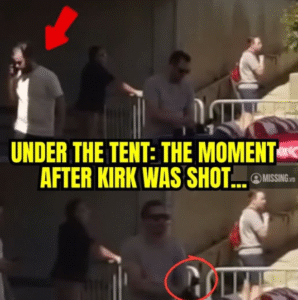WATCH CLOSELY: The Tent Camera Everyone Missed
In the age of instant capture—where every moment is filtered, tagged, and timestamped—the idea of a tent camera feels like a relic. A whisper from photography’s earliest days, when light was coaxed onto glass plates and images emerged like ghosts in the dark. But the tent camera, that curious contraption of canvas and lens, was never just a tool. It was a portal. And somewhere along the way, we stopped watching closely.
The tent camera—also known as the camera obscura tent—was a mobile studio, a traveling eye. Photographers in the 19th century would haul it across deserts, battlefields, and boulevards, setting up their canvas sanctuaries to capture the world one exposure at a time. Inside, the photographer became part magician, part monk. Light entered through a lens and projected an inverted image onto a surface, allowing the artist to trace or photograph what lay beyond the veil. It was slow, deliberate, and intimate. It required patience. Presence. Precision.
And yet, despite its poetic mechanics, the tent camera was often overlooked. It wasn’t flashy. It didn’t shout. It whispered. It invited. It asked the viewer to pause, to step inside, to see not just what was in front of them—but what was behind it. The tent camera didn’t just record reality; it refracted it. It bent time and light into something contemplative. Something human.
Today, we scroll past images at lightning speed. We double-tap, swipe, and forget. We consume visuals like fast food—quick, cheap, and disposable. But the tent camera reminds us that seeing is not the same as watching. Watching requires attention. Intention. A willingness to be changed by what we observe.
There’s a story—half-legend, half-truth—about a Civil War photographer who set up his tent camera near a battlefield in Virginia. While others rushed to document the carnage, he turned his lens toward a quiet grove where soldiers had carved their initials into the bark of a sycamore tree. His photograph, taken with painstaking care, captured not bloodshed but longing. The initials, etched in youthful bravado, spoke of lives paused mid-sentence. That image, tucked away in an archive, was nearly forgotten. But when rediscovered decades later, it became a testament—not to war, but to memory.
That’s the kind of seeing the tent camera demanded. Not spectacle, but story. Not noise, but nuance.
In many ways, the tent camera is a metaphor for the perspectives we miss when we rush. It’s the grandmother at the family reunion whose stories go unheard. The child drawing quietly in the corner. The stranger on the subway with a novel in their lap and a heartbreak in their eyes. These are the tent cameras of our lives—moments and people who invite us to step inside, to watch closely, to bear witness.
Artists and thinkers have long understood this. Photographer Abelardo Morell famously transformed rooms into camera obscuras, turning entire spaces into lenses. His images—upside-down cityscapes projected onto bedroom walls—remind us that the world is always waiting to be re-seen. That wonder is not a product of novelty, but of attention.
Even in modern filmmaking, echoes of the tent camera persist. Directors like Terrence Malick and Chloé Zhao linger on landscapes, faces, silence. They resist the urge to cut quickly, to explain everything. They let the image breathe. They let us watch. And in doing so, they honor the legacy of the tent camera—not as a device, but as a philosophy.
So why did we miss it?
Perhaps because the tent camera doesn’t demand our gaze. It invites it. And in a culture addicted to immediacy, invitations are often ignored. We want answers, not questions. We want clarity, not ambiguity. But the tent camera thrives in the in-between. It captures the moment before the smile, the shadow behind the light, the truth beneath the surface.
To watch closely is to resist distraction. It is to choose depth over breadth. It is to say: I will not look away.
There’s a kind of radical empathy in that choice. When we watch closely, we begin to see others not as characters in our story, but as protagonists in their own. We notice the tremble in a voice, the hesitation in a gesture, the courage in a glance. We become witnesses—not just to events, but to humanity.
The tent camera everyone missed is still here. It’s in the way sunlight hits a kitchen table at 4 p.m. It’s in the quiet dignity of a janitor sweeping a hallway. It’s in the handwritten note tucked into a library book. It’s in the stories we haven’t asked to hear.
And maybe, just maybe, it’s in us.
We are all tent cameras, in a way. We carry lenses—emotional, cultural, historical—through which we see the world. We project, we reflect, we record. But do we watch? Do we pause long enough to let the image form? Do we allow ourselves to be surprised?
To watch closely is to reclaim wonder. It is to say: I will not let this moment pass unnoticed. I will honor it. I will hold it.
In a world saturated with images, the tent camera reminds us that the most powerful ones are not the loudest, but the most intimate. They are the ones that ask us to step inside, to sit in the dark, to let the light in.
So the next time you find yourself rushing past a moment—pause. Watch closely. The tent camera is waiting.



